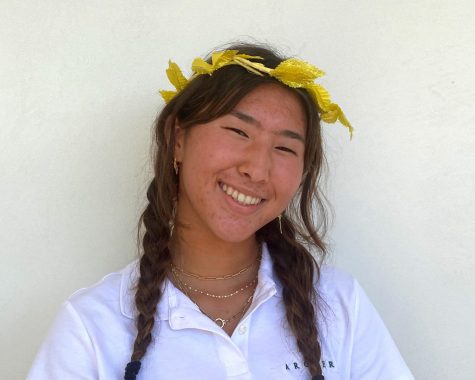Column: Paper Tigers and Star Wars figurines
Photo credit: Graphic illustration by Sydney Frank
This image depicts a tiger crawling out from the pages of a book. Storytelling is an integral part of one’s life, whether it be the fables you hear as a child, your favorite movie or a book you’ve read for an English class. Storytellers have the power to bring people together and combat the hate we so commonly see in society today.
December 15, 2022
Storytellers exist all around us; they come in all shapes and sizes, ethnicities and genders.
But what is a storyteller, really?
Stories have the power to transport us to a different universe and allow us to imagine something bigger than ourselves. Storytellers are the keepers of knowledge, the bridge between two worlds — one that exists and one just out of reach.
Earlier this week, I read an article by writer and activist Deepa Iyer where she presented something she calls the “social change ecosystem.” She explains how, within our society, we all assume various roles based on our individual pursuits and interests. This ecosystem consists of various social change roles ranging from disruptors to artists and builders. In particular, Iyer describes the role of a storyteller as someone who “[binds] the past and the present, channeling the histories and experiences of our ancestors to shed light on what is possible today.”
This specific role intrigued me, not only because I am a storyteller myself, but because there are so many storytellers in my life that I look up to. It made me question the art of journalism itself. What does reporting and storytelling — a traditionally impartial media — look like in the wake of violence and emotion? We’ve certainly had our fair share of both over the past couple of years.
When I think about the stories that have surrounded me throughout my life, I can count each one that has an Asian protagonist on one hand: “Mulan“, Hayao Miyazaki’s Studio Ghibli films, “The Summer I Turned Pretty” by Jennie Han, “These Violent Delights” by Chloe Gong, “Crying in H Mart” by Michelle Zauner, “The Joy Luck Club” by Amy Tan.
The one I remember the most, though, was a short story I read in my ninth grade English class: “The Paper Menagerie” by Ken Liu.
This was the first story I ever read that I really connected with on a deeper level. I saw a little of myself in Jack, the main character. We were both Asian American kids growing up in America with a white dad and an Asian mom. As he became a teenager, Jack started to reject every part of his Chinese culture, trading his mother’s handmade origami animals for Star Wars action figures. Years later, following his mother’s death, Jack finds a letter that she wrote to him about this rejection of his culture, leading him to reflect on the actions of his younger self.
If I had not read the “Paper Menagerie”, I truly do not think that I would have started this column in the first place. In a way no other story has done, Liu’s words inspired me to create my own. Seeing myself in Jack sparked a sense of belonging in me, and I strive to emanate that through my own stories and reporting.
Andrea Wang, the author of the award-winning children’s book, “Magic Ramen: The Story of Momofuku Ando”, highlights the importance of representation in children’s books, especially in the wake of anti-Asian sentiment within the US.
“Fear and misunderstanding are at the root of hatred,” she says. “Books about AAPI can help dispel myths and stereotypes and promote empathy and acceptance. I believe that books by and about AAPI characters are especially helpful in countering anti-Asian racism because they normalize the presence of AAPI in our communities.”
I completely agree with this. If anything will help combat the uptick of anti-Asian violence we’ve experienced over the past couple of years, it will be us, the younger generations.
Whether it be through paper tigers or Star Wars figurines, flying dragons or gut-wrenching reflections, it is our duty to encourage inclusivity. Storytelling is the true foundation for social change and provides us with essential opportunities to connect with one another.









